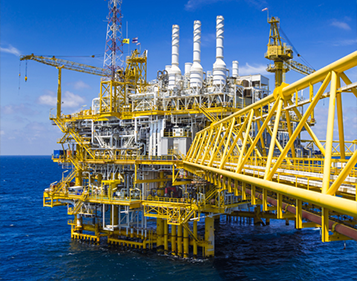4 Key Applications of Plasma Transferred Arc Coating
Plasma transferred arc (PTA) coating – also known as PTA hardfacing – was developed in the 1960s as a means of rebuilding and repairing worn mechanical parts. Today, plasma transferred arc coating is predominantly used for surface treatment, where it improves the durability of components that will be exposed to extreme abrasion and/or corrosion.[1,2]
The plasma transferred arc coating process is significantly different to other coating processes, including plasma spraying, in that it locally melts the surface during coating. This results in exceptionally strong metallurgical bonding between coating and substrate. In this sense, plasma transferred arc coating actually resembles a welding process – plasma arc welding – except that its function is to form a coating rather than join separate pieces of metal.
Plasma transferred arc coating offers numerous advantages for hard-wearing applications, including incredibly high surface adhesion and compatibility with a huge range of coating materials. Plasma transferred arc coating also offers better efficiency and lower costs than other high-energy coating techniques such as laser and electron beam cladding.[3]

In the oil and gas industry, components are exposed to extremely high levels of wear for long periods of time. Plasma transferred arc coating is used to impart hard-wearing coatings that extend the life of stabilizers, drilling pipes, drill bits and collars, valve parts, sealing rings and other components. In an industry where components are worked almost to exhaustion, plasma transferred arc coating can often extend the lives of mechanical components by several times.
Mining
Few industries are better acquainted with the effects of wear on heavy machinery than the mining industry. PTA coating is widely used in the mining industry to protect various types of heavy machinery including drills, bulldozers, crushers and mills from wear, extending their lifetimes and maximizing the value of investments in machinery.
Power Generation
The equipment and components used in power generation are subjected to extreme mechanical loads and high temperatures and steam pressures. Components such as valve seats, turbine blades, and impellers benefit from plasma transferred arc coating, enabling them to withstand extreme conditions over long service lives.
In these applications, normal thermal coating methods are often unable to produce a coating that bonds strong enough to withstand harsh operating conditions. Because plasma transferred arc coating effectively welds a coating to the substrate, it is ideally suited to the treatment of power generation components.
Coatings made from alloys of nickel, cobalt, iron, and tungsten minimize corrosion and improve resilience to impacts and loads. This enables components such as valve seats, turbine blades, and impellers to withstand the extreme conditions of power generation over long service lives.
Automotive
In the automotive industry, surface coatings are hugely important: they protect mechanical tooling used in the manufacturing process, and they’re used on products themselves in order to make them strong and durable.
In recent years, plasma transferred arc coating has attracted increasing attention in the automotive industry as a means of increasing resistance to corrosion and wear.[4] PTA coating of gray cast iron components using high-strength alloys such as tungsten, chromium, and iron can improve fatigue resistance in critical components such as disc brakes and engine blocks.[5]
Surface Coating Solutions from Saint-Gobain
Saint-Gobain is an industry leader in surface coating solutions. Our PTA-PHE technology is a highly cost-effective and fully automated plasma transferred arc coating system capable of producing very thin coatings (0.4-6 mm) with high speed, efficiency, and quality mimicking and sometimes surpassing that achievable of laser cladding. These wear or corrosion-resistant single-layer coatings can produce huge improvements in resistance to abrasion, corrosion and friction in demanding applications.
Get in touch with us today to find out more about our plasma transferred arc coating solutions.

References and Further Reading
- Boulos, M. I., Fauchais, P. L. & Heberlein, J. V. R. Plasma Transferred Arc Coating. in Thermal Spray Fundamentals: From Powder to Part (eds. Boulos, M. I., Fauchais, P. L. & Heberlein, J. V. R.) 519–558 (Springer International Publishing, 2021). doi:10.1007/978-3-030-70672-2_12.
- Plasma transferred arc welding—modeling and experimental optimization | SpringerLink. https://link.springer.com/article/10.1361/105996306X146767.
- Łatka, L. & Biskup, P. Development in PTA Surface Modifications – A Review. Advances in Materials Science 20, 39–53 (2020).
- Aranke, O., Algenaid, W., Awe, S. & Joshi, S. Coatings for Automotive Gray Cast Iron Brake Discs: A Review. Coatings 9, 552 (2019).
- Shi, K., Hu, S. & Zheng, H. Microstructure and fatigue properties of plasma transferred arc alloying TiC-W-Cr on gray cast iron. Surface and Coatings Technology 206, 1211–1217 (2011).
